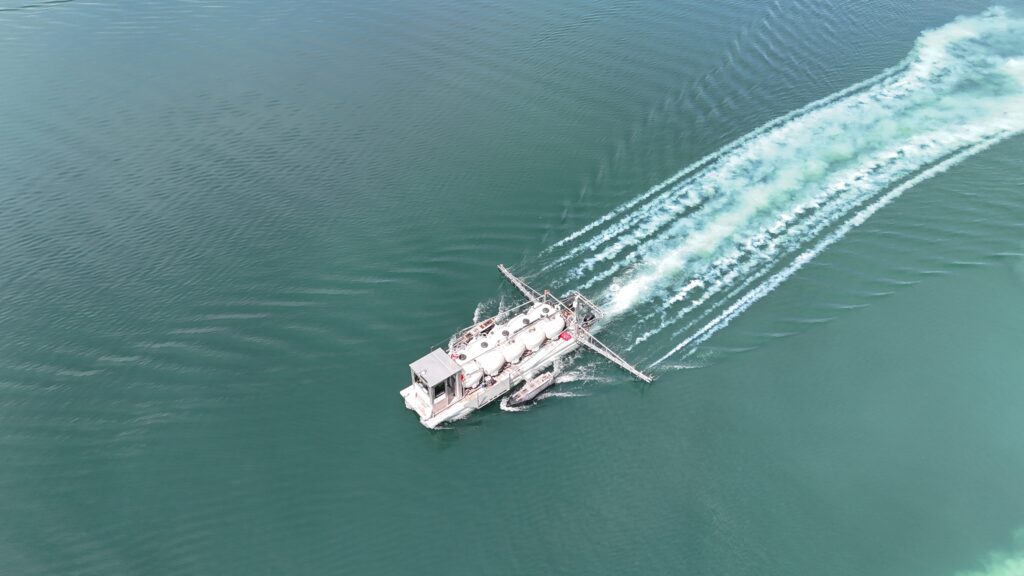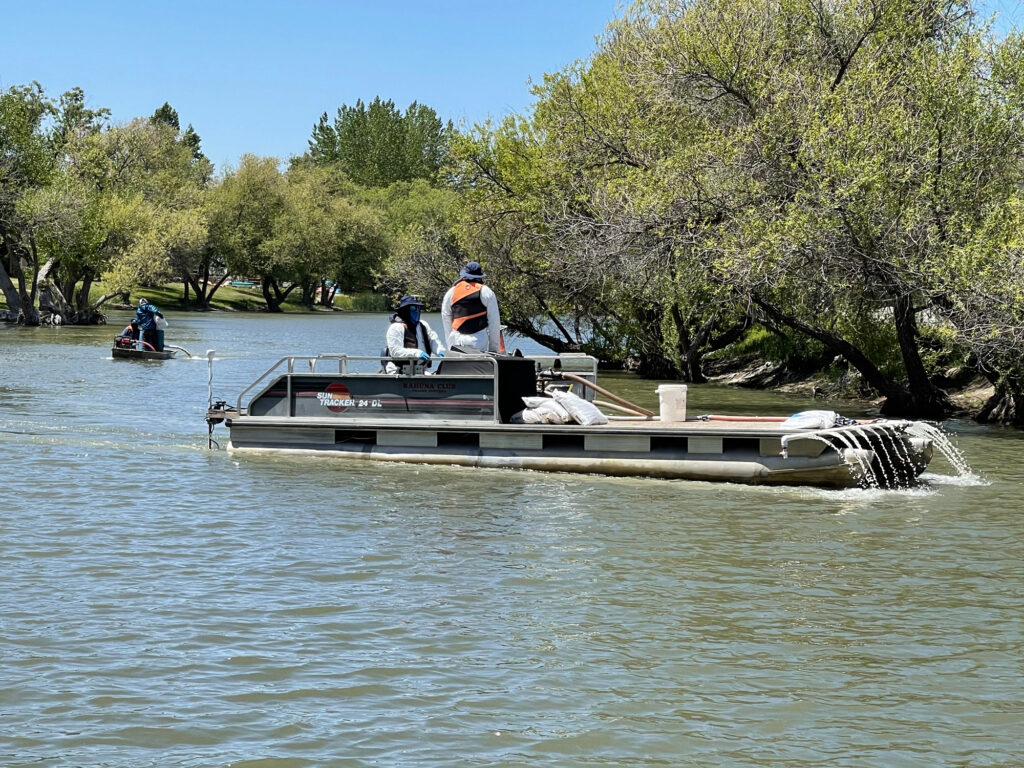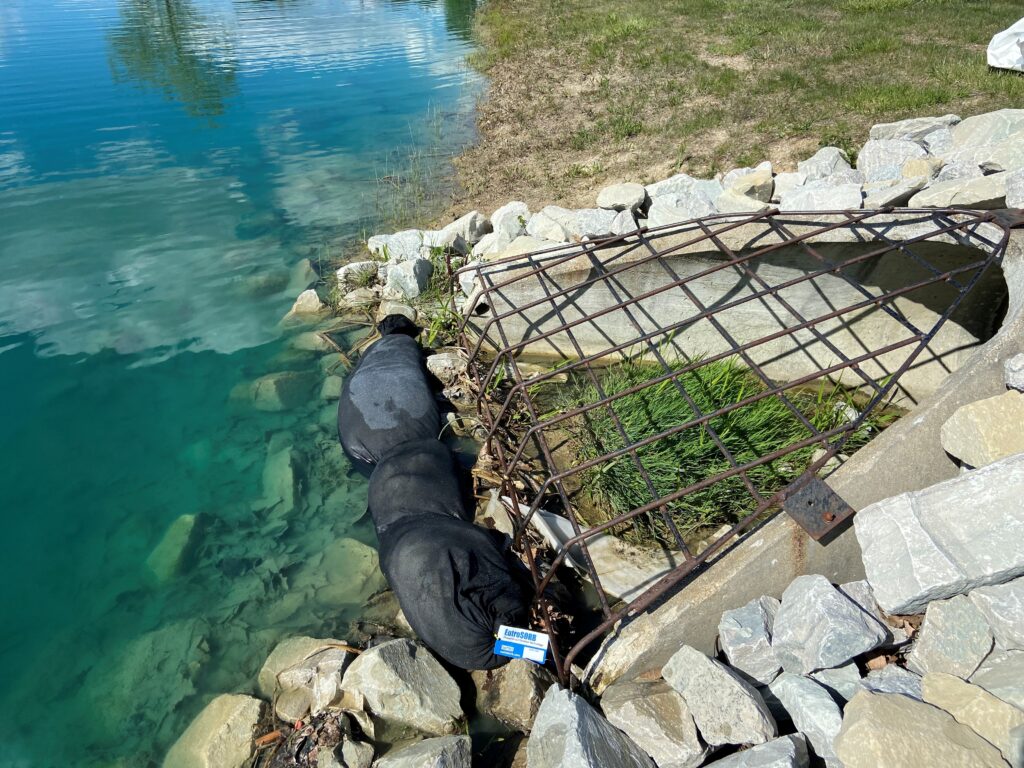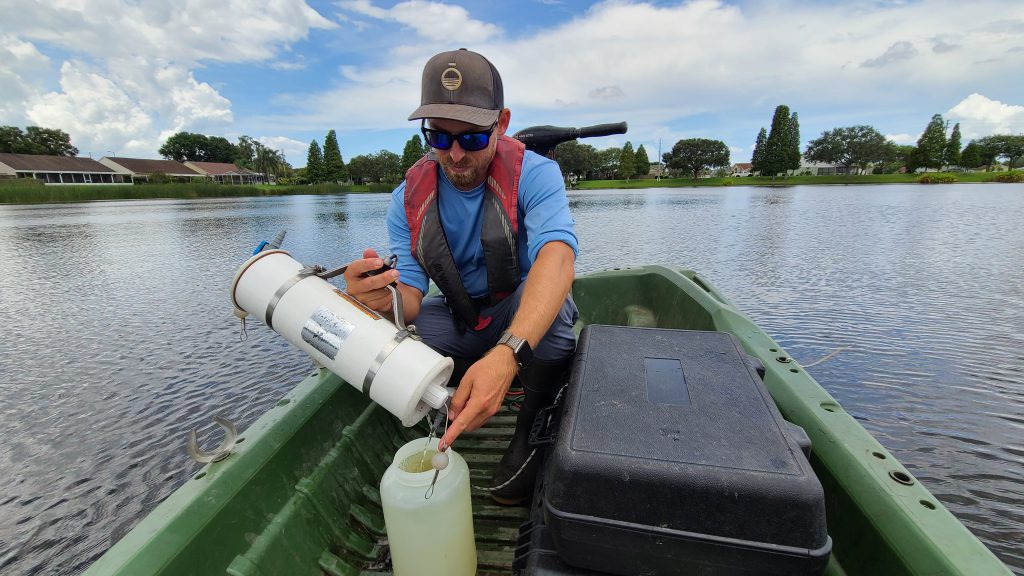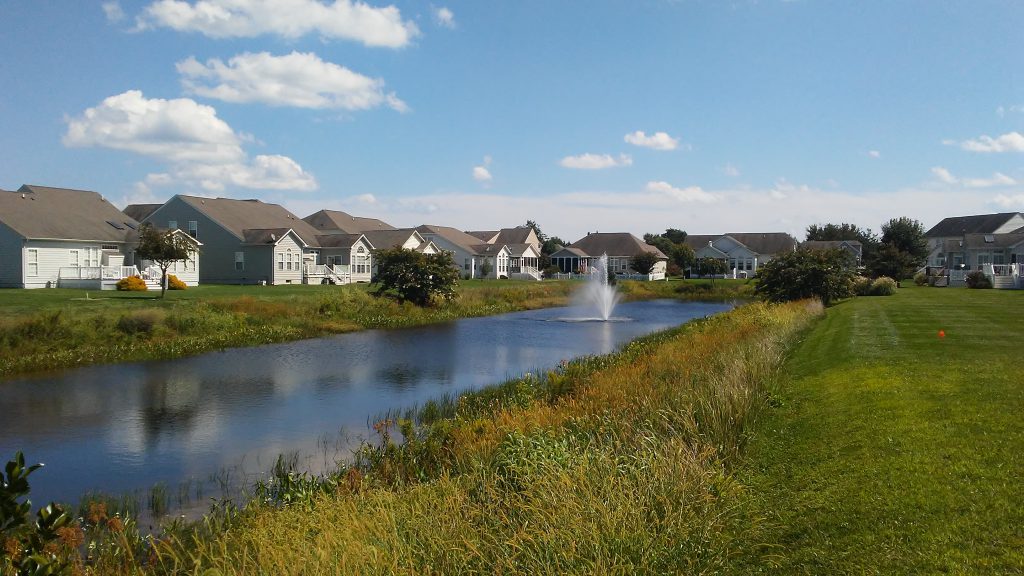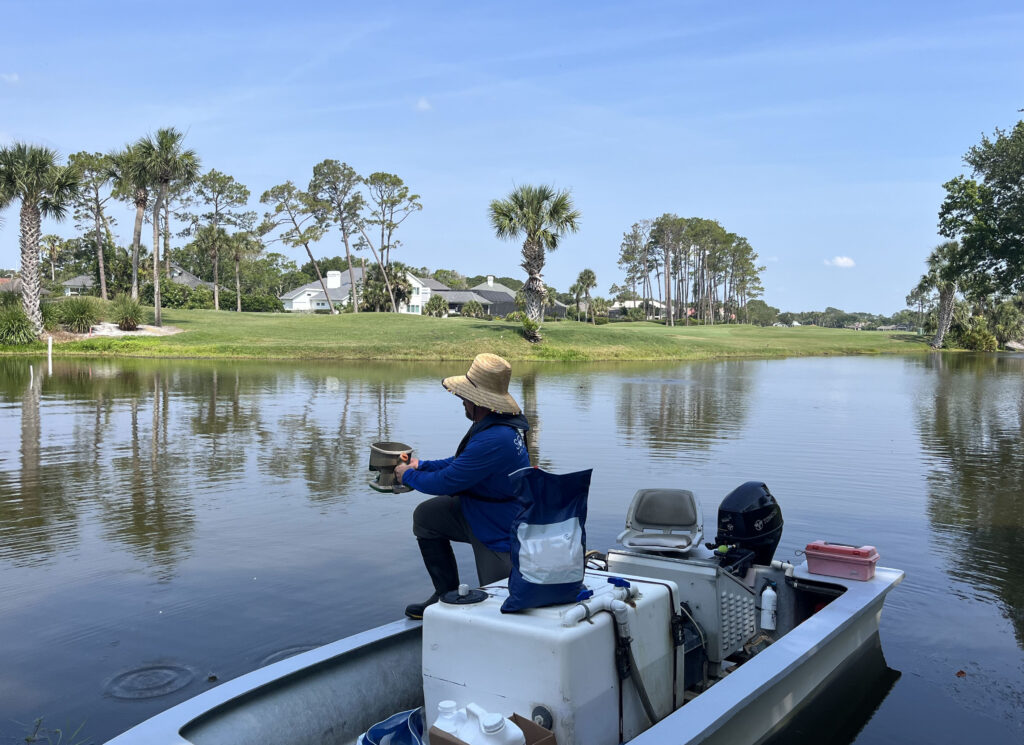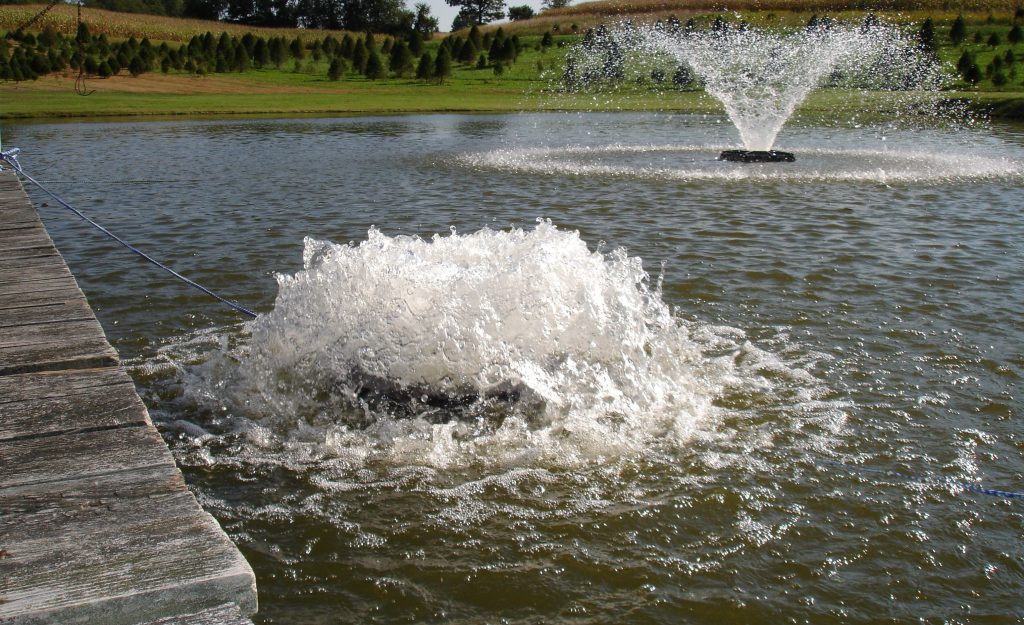
What causes nutrient pollution in lakes and ponds, and how can it be fixed?
Aquatic weeds and algae are among the most common frustrations we hear from lake and pond owners. These unwelcome aquatic nuisances can turn a pristine waterbody into an unsightly mess, and stakeholders often seek a quick fix to restore the appearance of their water. While herbicides and algaecides can offer temporary relief, they don’t address the root cause of water quality issues—nutrient pollution.
The word pollution typically evokes images of smokestacks or litter, but in lake and pond management, it refers to the introduction of excess nutrients like phosphorus and nitrogen into the water column. These nutrients are essential for aquatic life, but they can also disrupt the ecosystem’s balance when in excess. Understanding how pollutants enter and affect your waterbody is crucial for effectively restoring and maintaining its long-term health and beauty.
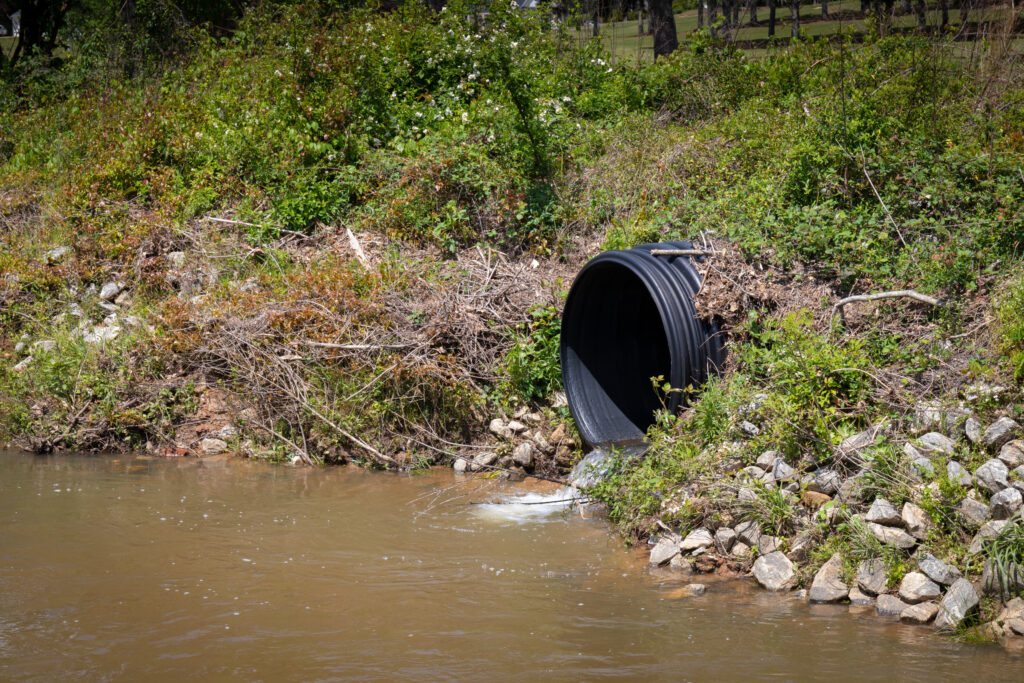
Sources of nutrient pollution
Human impact on the environment is typically the cause of nutrient pollution in lakes and ponds. Primary sources of nutrient pollution are lawn and garden fertilizers, yard debris like grass clippings and leaves, sediment or materials from construction sites, sewage discharge, and animal waste—particularly runoff from dog parks. Most of these materials enter waterbodies via stormwater runoff. When it rains, water flows across impervious surfaces like roads and sidewalks, collecting pollutants before entering ponds and lakes that are designed to filter out these substances while reducing flood risks.
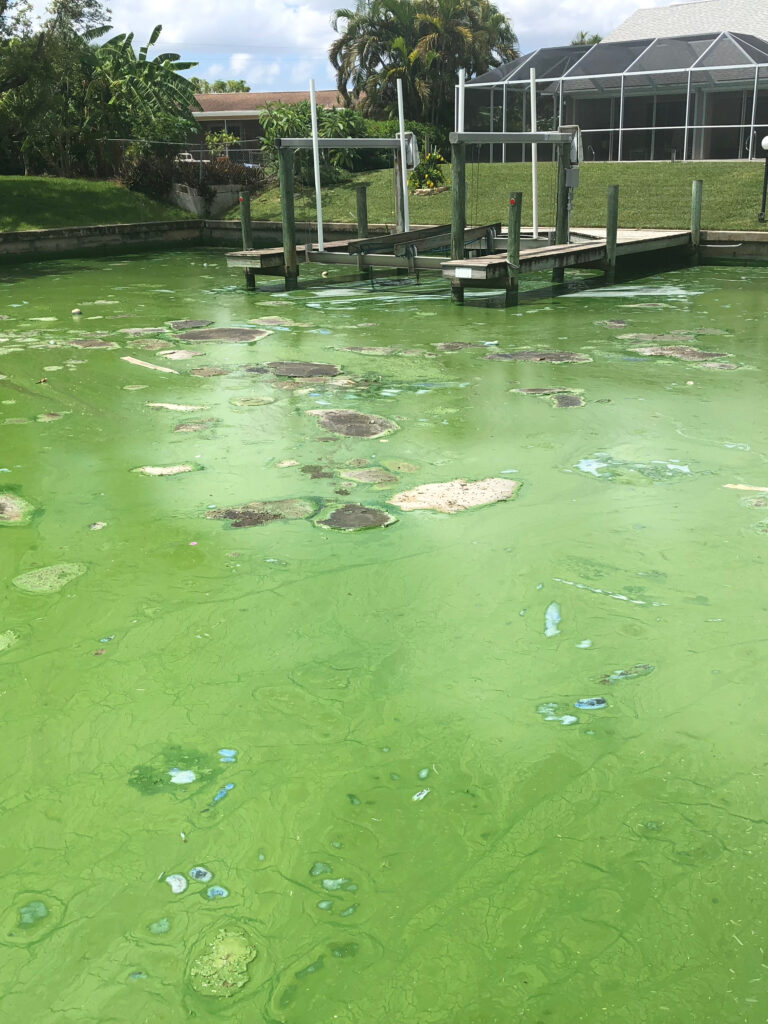
Effects of nutrient pollution
Nutrient pollution directly contributes to eutrophication – the aging of the ecosystem. By making the waterbody more fertile, aquatic weeds and algae, including toxic cyanobacteria (blue-green algae), are more likely to proliferate beyond safe levels, triggering a chain reaction of oxygen depletion, muck development, and loss of water depth. Without intervention, the waterbody will continue to fill in and shrink. Eventually, costly dredging may be the only option to restore it to its original state.
Resolving nutrient pollution
While nutrient pollution problems can continue to escalate if left unmanaged, they don’t always spell the end for your lake or pond. If intercepted early, several nutrient remediation solutions may be utilized to help reduce nutrient levels and restore water quality:
Alum
One effective technique to help combat nutrient pollution is the application of aluminum sulfate, or alum. Alum has been used for decades in recreational lakes, drinking water reservoirs, and wastewater treatment plants to control phosphorus levels. The process involves introducing the material below the water’s surface using a specialized vessel equipped with a state-of-the-art injection system. It quickly binds with excess phosphorus throughout the water column forming a floc. As the floc sinks to the bottom, water quality and clarity improve over time. The floc locks the phosphorus into the bottom sediment, preventing it from being released back into the water. The SOLitude team has successfully treated over 35,000 acres of water using alum and can help stakeholders pursue federal grants and funding, as well as the necessary permits.
Lanthanum-Modified Bentonite
Another solution for managing nutrient pollution is lanthanum-modified bentonite. This method works similarly to alum by binding with excess phosphorus in both the water column and the bottom sediments. This naturally occurring product is recommended for smaller waterbodies and stormwater ponds where phosphorus levels are often more concentrated.
Phosphorus filtration bags
For waterbodies with moving water, such as streams, canals, or stormwater ponds, phosphorus filtration bags can be an effective solution to your nutrient pollution problem. These bags are designed to rapidly capture phosphorus as water moves through them. Once the bags are fully filled, they are removed from the waterbody for off-site disposal, ensuring that the phosphorus doesn’t reenter the system. This method is not only environmentally friendly but also offers a physical means of removing nutrients from the water.
Preventing nutrient pollution
Each of these nutrient remediation methods is safe, environmentally responsible, and effective when employed by an experienced professional. However, nutrient remediation is not a one-time fix. That’s why proactive management is essential to help prevent future nutrient imbalances and avoid the consequences of nutrient pollution.
Water quality testing
Water quality tests help Aquatic Experts understand exactly what’s going on under the water. Like a blood test, water samples can be collected over time to assess dozens of characteristics, from nutrient levels and dissolved oxygen concentrations to salinity and pH. This robust data can help experts identify and correct potential imbalances before they pose more serious problems.
Shoreline management
One way to help avoid nutrient pollution issues is by planting native vegetation along the shoreline. Vegetative buffers made of native plants not only enhance the beauty of the shoreline but also serve as a natural filter, preventing nutrients from stormwater runoff from entering the waterbody. These plants also stabilize the shoreline, reducing erosion and the risk of collapse under the weight of residents or employees. If the shoreline has already deteriorated, a complete restoration using advanced bioengineering techniques may be necessary.
Beneficial biological bacteria
Biological bacteria play an important role in the foundation of the food chain by aiding in the decomposition of pollutants and decaying organic matter, preventing the build-up of nutrient-rich sludge. These beneficial bacteria can be introduced proactively, similar to a probiotic.
Fountains and aerators
Waterbodies rich in dissolved oxygen (DO) are typically healthier and more resilient to water quality imbalances. Beneficial bacteria, in particular, require oxygen to efficiently break down nutrient-rich muck and other pollutants. Fountains, surface aerators, and submersed aerators each work differently to improve oxygen levels throughout the entire water column.

Community practices
Finally, simple steps can be taken to reduce the sources of nutrient pollution. Picking up trash and pet waste, reducing lawn fertilizer use near the water, and bagging leaves and grass clippings can all significantly reduce nutrient pollution.
Reduce Nutrient Pollution with Integrated Lake Maintenance
Effective lake and pond management requires a multi-faceted approach. By incorporating a full spectrum of proactive solutions, you can help foster a healthier, cleaner, and safer aquatic ecosystem. Do you think your waterbody may be suffering from nutrient pollution? Contact the experts at SOLitude today!
Explore the Power of Alum Applications
SOLitude Lake Management is a nationwide environmental firm committed to providing sustainable solutions that improve water quality, enhance beauty and preserve natural resources.
SOLitude’s team of aquatic scientists specializes in the development and execution of customized lake, stormwater pond, wetland and fisheries management programs. Services include water quality testing and restoration, algae and aquatic weed control, installation and maintenance of fountains and aeration systems, shoreline erosion control, muck and sediment removal and invasive species management. SOLitude partners with homeowners associations, golf courses, private landowners, businesses and municipalities. SOLitude Lake Management is part of Rentokil, a leading business services company, operating across the United States, Canada and Puerto Rico.
For more information, visit SOLitude Lake Management at solitudelakemanagement.com, and connect on Facebook, LinkedIn, Twitter, Instagram and YouTube.








